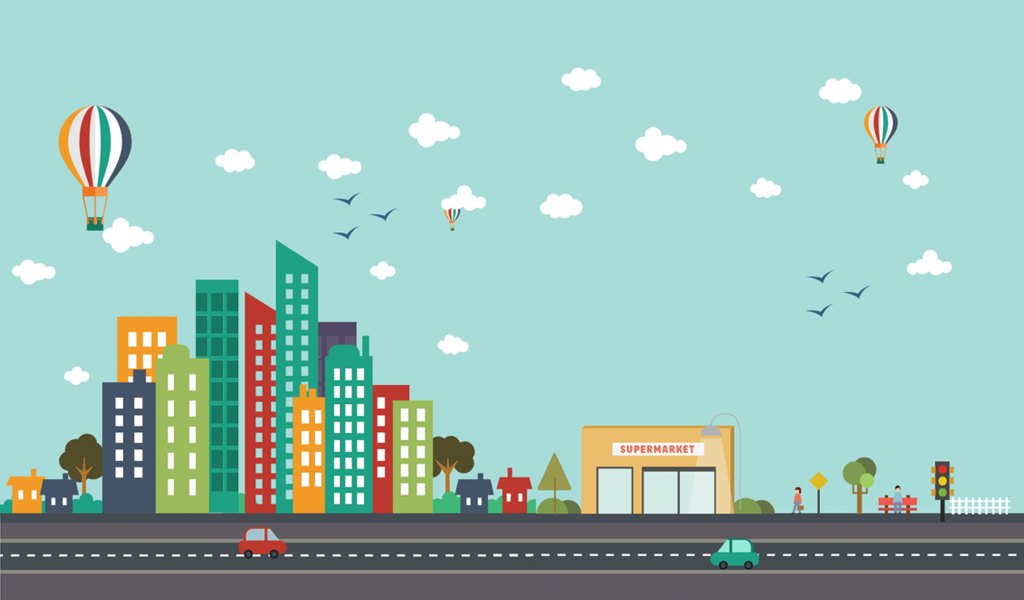Making Yangon A Green City

The example of modern buildings together with parks is a popular trend in developed cities such as New York, Sydney, Tokyo and Singapore. Yangon, the commercial capital of Myanmar, has opportunities to become a green city.
However, with the proliferation of taller buildings, green areas are disappearing in Yangon, said U Maung Maung Than, country director for Myanmar at The Center for People and Forests (RECOFTC).
Less greenery has led to higher temperatures in Yangon, which recently saw a record high of 42.2 degrees Celsius. Record-breaking temperatures were noted at over 20 other weather stations across the nation.
Less greenery in urban areas
One of the main reasons for declining green areas in cities is the proliferation of high-rise buildings like condominiums and residential complexes.
Housing projects are necessary from a commercial point of view, but green areas are also important for a city, so there needs to be a balance. In Yangon, gardens and parks originally occupied one fourth of the city. But Yangon’s green areas will gradually disappear if housing keeps expanding.
“In Yangon, if there is a balance between green and commercial areas, there will be recreational areas for people and the city will be more liveable,” said U Maung Maung Than.
“Housing shouldn’t be allowed in green areas like Inya Lake and Mya Kyun Thar. Places should be reserved for people to come to relax, especially on weekends. Allowing construction in such places is wrong,” he said.
Building design is also important, and condominiums should provide places to grow plants and place flowerpots, he said.
“We have lost a lot of green areas to construction projects. Our country requires a good system,” U Maung Maung Than said.
A typical neighbourhood in Yangon. A city should have about 30 percent green area, experts say. Aung Myin Ye Zaw/The Myanmar Times
One third green
Due to the many utility cables and poles in urban areas, only certain types of plants and trees can thrive.
“For example, red cedar trees and star-flower trees can be planted. While trees such as the royal poinciana and golden shower are beautiful, their disorderly branches can be a problem,” he said.
“The government should not try to construct buildings in every open space. A city should have about 30 percent green area,” he said.
“With the threat of climate change, cities need to implement green-city measures and use renewable energy,” he said.
Recently in many places in Yangon, trees that get in the way of wires have been cut down. People are seeing this during the hot season, so it has sparked a lot of criticism, but these trees need to be cut because of the damage they can cause.
“It is a tradition to cut trees after Thingyan, as many leafy trees fall due to strong winds in the rainy season,” he said.
Attitude change
Even as the city’s trees dwindle, we can do our part to make conditions in the city better by changing some of our daily habits. Due to the changing lifestyles of people, climate change and overheating is occurring, environmental experts say.
“We shouldn’t switch on lights unnecessarily or turn on air conditioners in every room. We should set air conditioners at a normal temperature, about 26C, because they use greenhouse gas,es” U Maung Maung Than said.
A strong public transportation system is also very important to give people an alternative to buying cars. It is also important to reduce people’s use of coal and firewood in rural areas.
“For example, people in other countries commute to work on trains. They are more punctual than private vehicles and can accommodate more people. We have to prioritise such issues,” he said.
While Cyclone Fani in the Bay of Bengal last month brought rain to some parts of the country and reduced temperatures, the heat has returned and some regions without rainfall are facing extreme heat.
In Myanmar, the causes of climate change are deforestation, greenhouse gases from farming, increasing use of appliances, transportation, and industrial pollution.
“We must identify the causes and try to reduce them as much as possible,” U Maung Maung Than said.
Reducing the temperature is not a process that can bear results overnight. It is a task that demands a sustained effort over a long period of time because the climate change we are facing is due to causes that have been building up for decades, he said.
“It isn’t possible for the country to reduce the temperature through modern technology, which is costly. The public should try to solve the issue by planting more trees.
“Only in this way will the climate be gradually reversed to a more favourable level,” U Maung Maung Than said.


